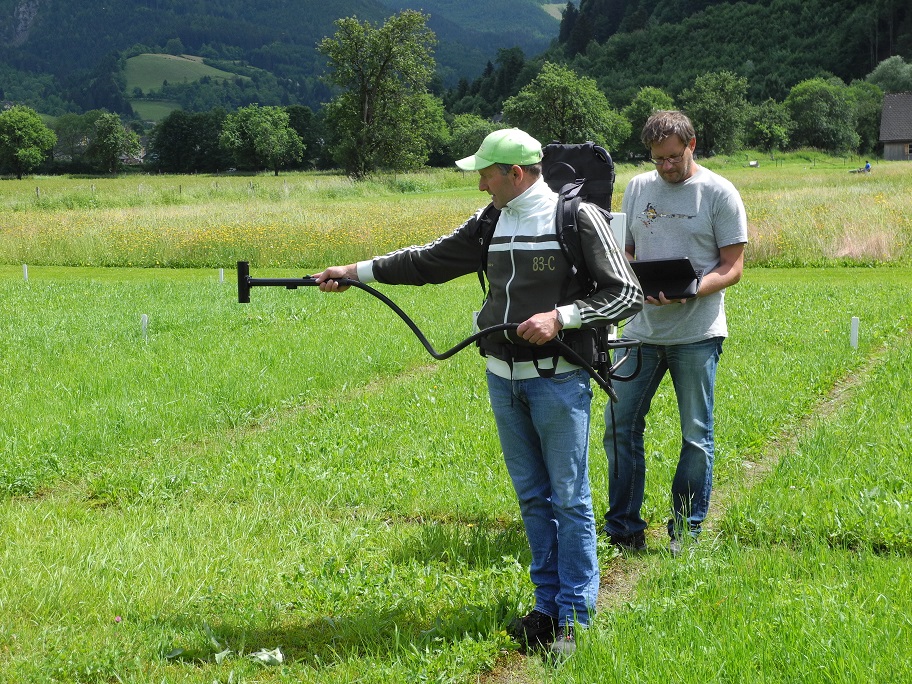With field spectrometry as a non-contact recording method, the condition of plants in the field can be recorded at short intervals. Measuring the electromagnetic radiation reflected by plants provides a spectral signature across the wave ranges of visible light, the near infrared and the short wavelength infrared. Wavelength-specific evaluations can provide information about, among other things, pigment concentrations (e.g. chlorophyll), nutrient supply to plants, water content, biomass, stress situations, etc. As part of this project, software was developed to process and store the spectra - the prerequisite for efficient evaluation of the data.
Schaumberger, A. (2017): Implementation of field spectroscopy for the non-invasive examination of plant populations, final report, HBLFA Raumberg-Gumpenstein, Irdning, 57 p.







